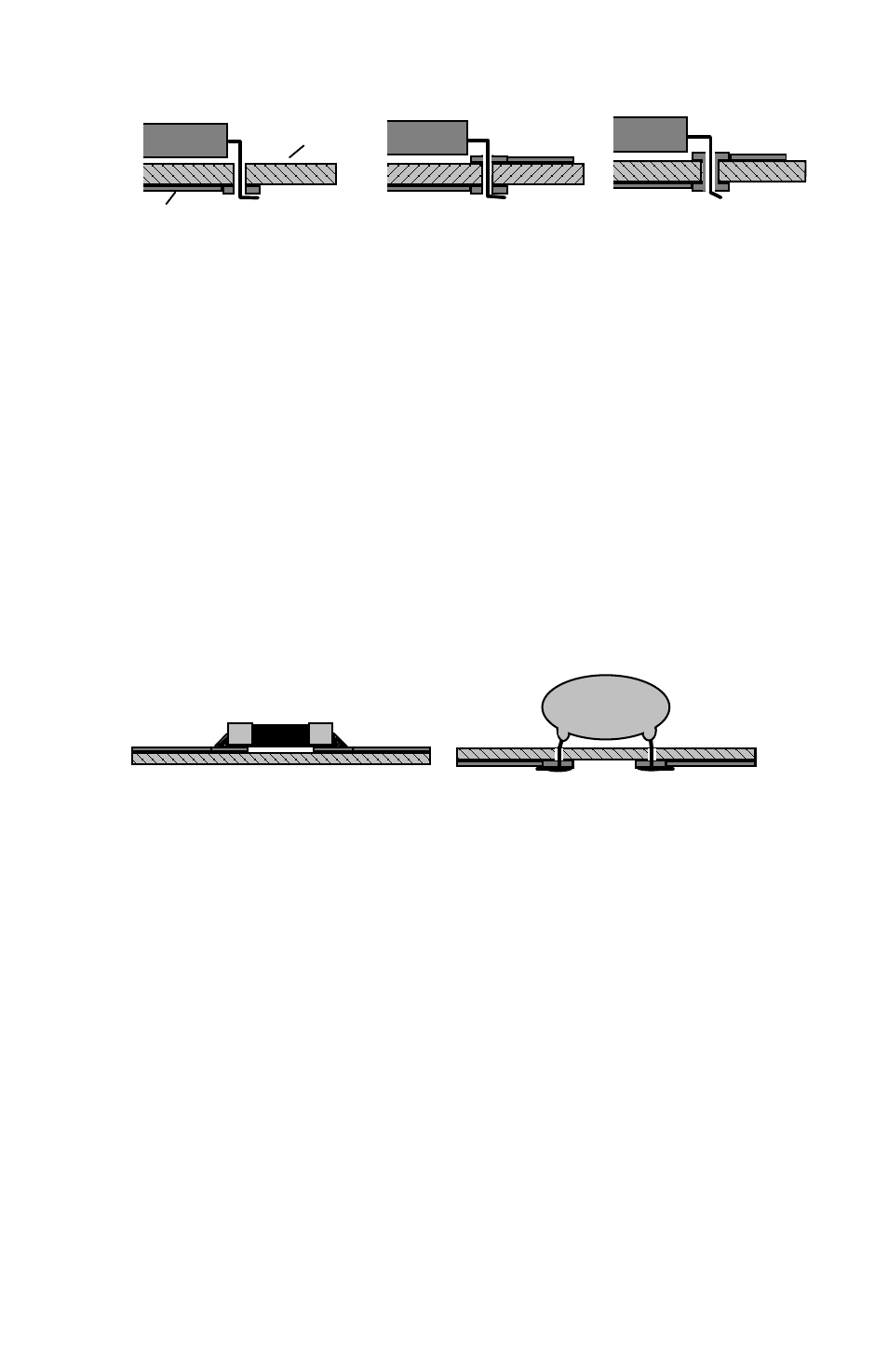Vectronics VEC-1500K User Manual
Page 30

25
Single-Sided
Double-Sided
Double-Sided Plate-Through
Solder Side
Component Side
Multi-Layer Boards:
With the advent of miniaturized computers and massive
LSICs (large-scale integrated circuits), PC boards have now taken another step
forward. Some PC boards contain multiple layers of conductive traces laminated
into the board which are interconnected by plate-throughs. These are called
multi-layer plate-through
boards.
Through-Hole and SMD Layouts:
Increasingly, sub-miniature leadless
components are secured directly to the board's surface--reducing the need for
drilled mounting holes. Because of this, we now distinguish between through-
hole construction
, where leads or mounting tabs penetrate the board, and SMD
or surface-mount construction,
where parts are held in place with adhesives and
secured to pads with solder. This course focuses on through-hole construction,
but many circuit boards now combine a hybrid mixture of both. Often, through-
hole components are mounted on the top surface and SMD components mounted
on the bottom. In other cases, they are mixed together.
Surface-Mounting
Through-Hole Mounting
104
Single-sided, double-sided, and multi-layered PC board construction are all
currently popular--depending on the application. Unplated and plated holes are
also widely used. However, there are important differences between plate-
through and non-plate-through hand-soldering techniques. In the next section,
we'll look at the soldering methods for each.
Circuit Board Soldering Techniques
Soldering Single-Sided Boards:
Single-sided boards remain popular for lab
projects and low-cost electronic products because they are simpler and cheaper
to make (many hobbyists and circuit designers make their own). When
constructed properly, single-sided boards are extremely reliable and resistant to
environmental deterioration.
Cleaning and Preparing:
Etched surfaces on commercially-manufactured
boards are usually pre-tinned to reduce oxidation. However, surfaces on
